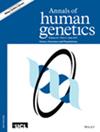Secondary findings in 443 exome sequencing data
Abstract
Exome sequencing (ES) may identify and report secondary findings that are unrelated to the primary disease for which the patient underwent genetic testing, but are of potential value in patient care.
In this study, we evaluated 81 American College of Medical Genetics (ACMG) medically actionable genes in 443 patients with various neurological disorders. The variants identified were classified and reported following the 2015 ACMG Standards and Guidelines for the interpretation of sequence variants and the ACMG recommendations for reporting secondary findings (v3.2).
We detected a total of 17 variants in 17 patients across 9 different genes as secondary findings. Seven heterozygous variants were found in BRCA1, MSH2, and PALB2 which are part of the cancer phenotype category. Nine heterozygous variants were found in MYH7, TTN, LDLR, DSC2, and DSP which are part of the cardiovascular phenotype category. Finally, one heterozygous variant was found in TTR which is part of the miscellaneous phenotype category. Thirteen of above mentioned variants were classified as known pathogenic and four as expected pathogenic.
The information collected in our study may lead to the prevention of severe morbidity and mortality and provides additional insight into the genetic background of the Serbian population.

 求助内容:
求助内容: 应助结果提醒方式:
应助结果提醒方式:


